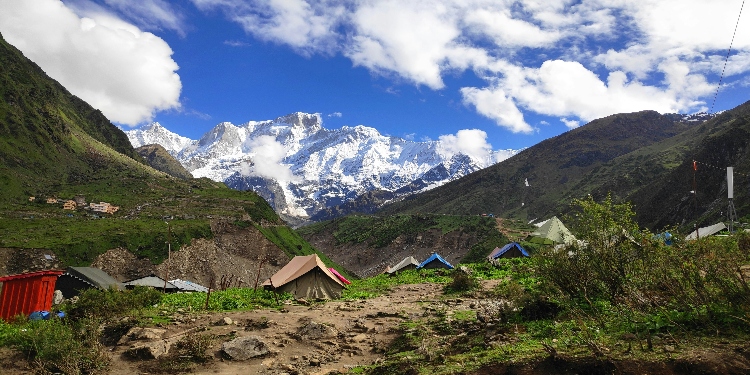The ABC Trek is one of the most famous Treks in Nepal, promising vertiginous landscapes, rich biodiversity, and ethnic and cultural heritage. Located in the Annapurna Conservation Area, this trek provides a view of some of the tallest mountains in the world, including Annapurna I (8,091m), Annapurna South, Hiunchuli, and the sacred Machapuchare (Fishtail).
They specifically leave the Annapurna Base Camp Trek because it is a beautiful blend of physical geography features and racial differences. It passes through the fields for cultivation, the thick forest cover dominated by rhododendrons, pastures and grasslands on the alpine tracts and through the mountain inhabited by the Gurkha community. The moderate level of difficulty of this trek makes it possible for those who have never been on a trek; however, for those who have been, it poses a challenge but yields rewarding returns.
Highlights of Annapurna Base Camp Trek
1. Majestic Mountain Views
It’s mandatory to note that the Annapurna range consists of some of the highest and most famous peaks in the world. The trek offers steep and beautiful views of Annapurna I, Annapurna South, Hiunchuli, and Machapuchare peaks. These giant mountains with snow-capped summits always stay in sight while progressively climbing higher into the Annapurna Sanctuary, particularly during the early morning and late evening light when the mountains are painted with amber colors.
2. Culture as a Concept and the Local Villages
This shows you pass through Gurung and Magar country, such as the village of Ghandruk or Chhomrong, which has traditional cultures to behold. These communities are friendly and hospitable; visitors can interact with them and learn more about their way of life, including their religion, which blends Hinduism and Buddhism. For example, in Ghandruk, you find the Gurung Ethnographic Museum, where you can learn about this community’s culture and history.
3. Diverse Landscapes and Flora
Another peculiarity of the ABC position is that the landscapes along the standard trek to the ABC are different. The starting point of the trek is the lowland tropical zone, which is filled with rice terraces, but the higher one goes, forests of oak, bamboo, and rhododendron dominate. The degree of difficulty increases progressively as it gets higher; alpine meadows, glacial moraines, and barren, high, stern rocky terrains dominate, the base camp. During spring, the forest has trail displays of red, pink, and white rhododendrons, making the mountains even more beautiful to climb.
4. The Annapurna Sanctuary
The Annapurna Sanctuary is a geographical area situated at a very high altitude and enclosed by the Himalayan mountains’ ring. Its bowl-shaped structure gives it the feeling that one is in another world, and the feeling while climbing the stairs to this sanctum is one of the biggest trips of the hike. MBC to Annapurna Base Camp (4,130m) is the last place to marvel at the natural beauty, and the panorama views of the mountains are extraordinary as 360-degree sight is filled with Himalayan ranges around you.
5. Natural Hot Springs at Jhinu Danda
Some of the activities that can be done include reaching Jhinu Danda for Natural Hot springs after days of trekking. The hot springs are surrounded by steep ridges of the Annapurna and situated on the south bank of the Modi Khola River. The water, with a temperature of 40 °C, could help people with tired legs and muscle pains relax and enjoy the magnificent views of the mountains. Many trekkers prefer to stop at this place because it can be relaxing and provides beautiful views.
6. Machapuchare: The Sacred Mountain
Other mountains include the beautifully shaped ‘Fishtail’ Mountain, which is also known as ‘Machapuchare’; they believe this mountain is sacred and climbing it is prohibited. The trek provides views of this beautiful peak, particularly at the Machapuchare Base Camp (MBC). This particular segment of the trek is somewhat sacred, and even when looking at the gigantic silhouette of Machapuchare with its steep peaks, trekkers tend to call it the most stunning.
7. Rich Wildlife
The Annapurna Conservation Area is geographically endowed with numerous floral and faunal diversities. Trekkers can view wildlife such as langur monkeys, musk deer, and birds, including pheasants, which are Nepal’s national bird. Other animals found in the conservation area include snow leopards and red pandas, although they are rarely seen.
8. Gurung and Magar Culture
The cultural aspect of the trek is profoundly enriching. The Gurung and Magar people, who inhabit the villages along the trail, are known for their unique traditions and festivals. Visitors often glimpse their daily lives, from farming and herding to traditional dances and songs. You might even witness their famous cultural performances during special occasions, adding to the trek’s rich experience.
9. Stunning Sunrises and Sunsets
Annapurna Base Camp offers trekkers some of the world’s most beautiful sunrise and sunset views. As the sun rises or sets, the peaks of Annapurna and Machapuchare are bathed in a golden glow, creating a magical atmosphere. Watching the sun slowly illuminate the snow-capped mountains is a spiritual experience that makes the trek all the more rewarding.













































































